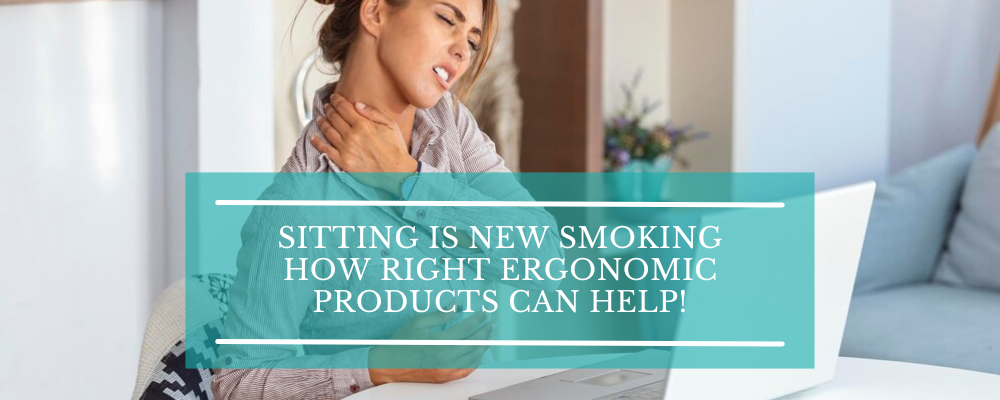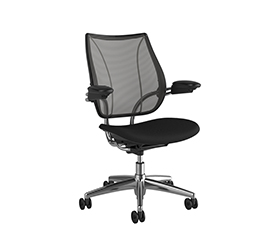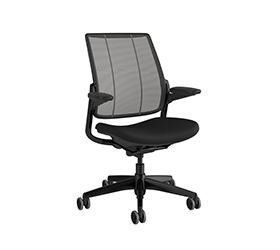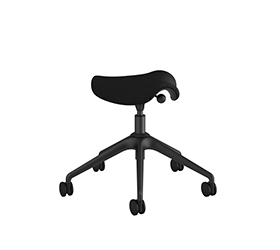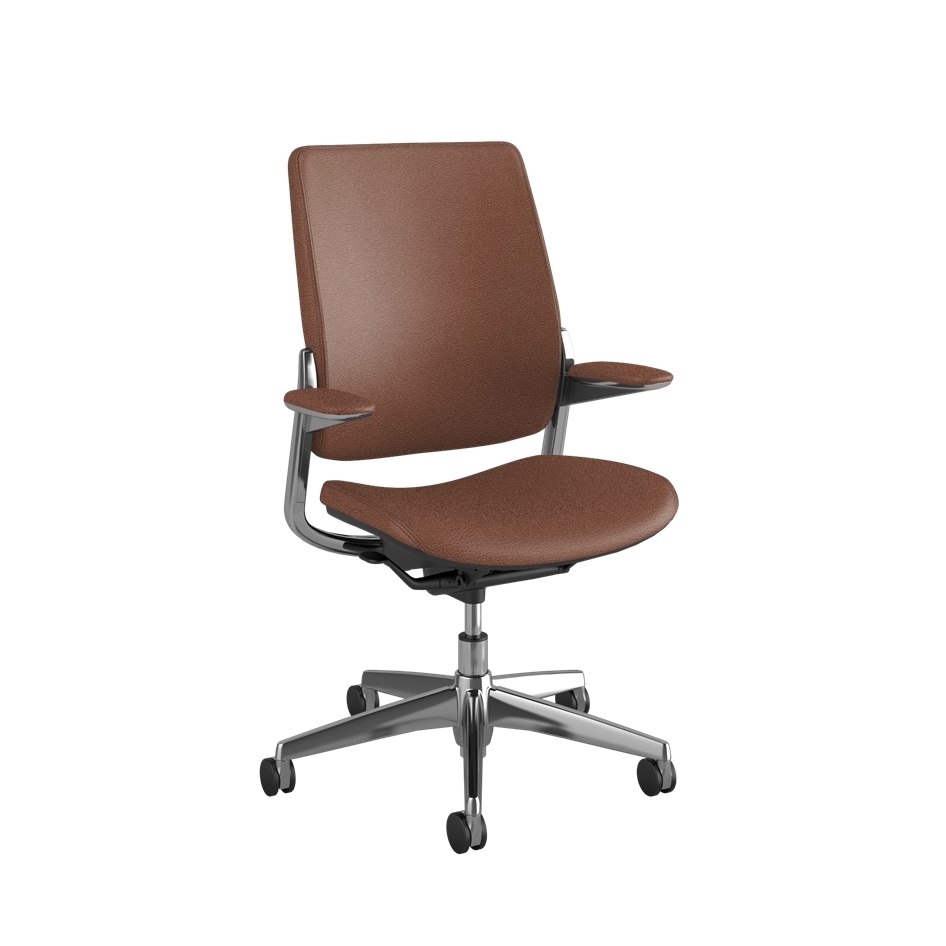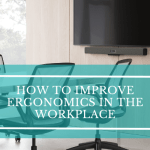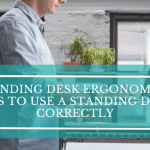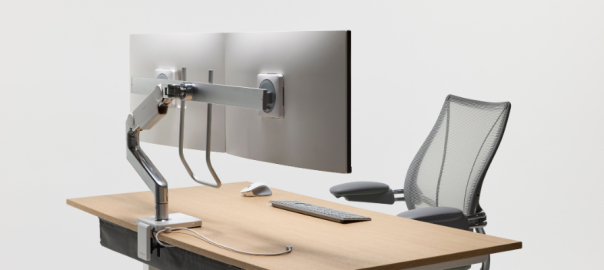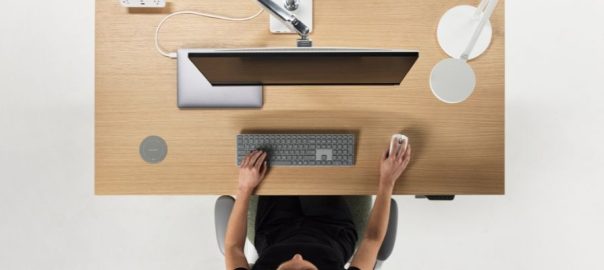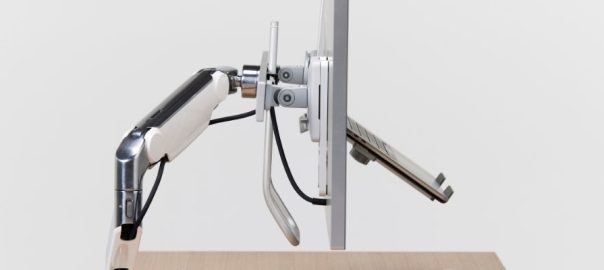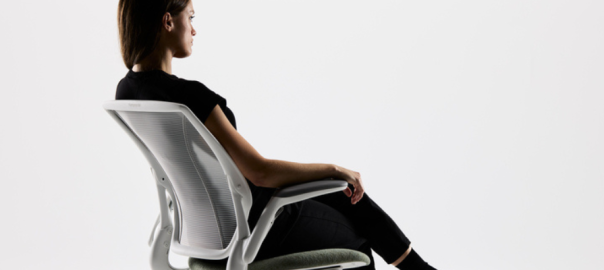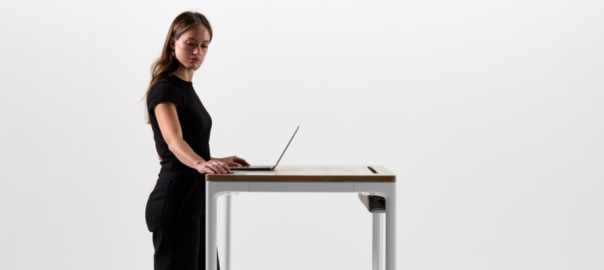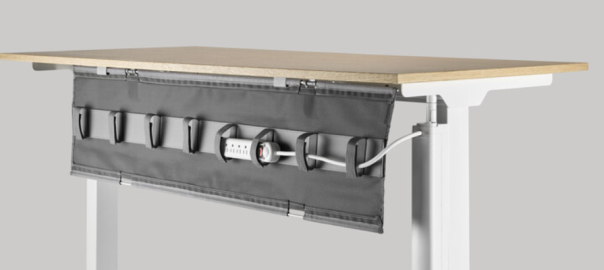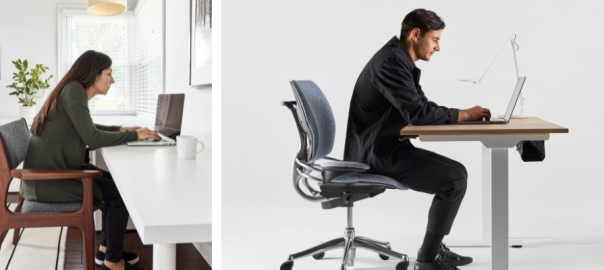A report1 reveals that approximately 64% of individuals spend nearly nine hours sitting during a 10-hour workday, whether at their desks or in meetings and conference rooms.
Today, most people spend a considerable portion of their workday glued to their chairs, facing a computer screen, whether in traditional office cubicles or home workspaces. Many do not realize that spending hours perched on their posterior can seriously damage their health. Prolonged sitting, once considered harmless, has given rise to the phrase “sitting is new smoking,” coined by James Levine2, a professor of medicine at the Mayo Clinic.
But fret not! This does not mean you have to give up your desks altogether. Instead, the solution lies in incorporating ergonomic products into your workplace. This article explores the dangers of prolonged sitting and unveils how ergonomic solutions can be your saving grace.
Dangers of Prolonged Sitting: How Harmful is Too Much Sitting?
A significant portion of the Indian population leads a sedentary lifestyle. Over 25% of Indian adults3 sit for more than 8 hours a day, and nearly half of them engage in little to no physical activity. This lack of movement is further compounded by extensive screen time, with the average Indian adult glued to the television for about 3 hours daily.
What is wrong with this situation? The human body is not built for long periods of sitting. When you sit for extended durations, your overall blood circulation slows down, further hindering the body’s processes for breaking down sugars and fats properly. Consequently, the fatty acids in your blood vessels increase4, putting you at a greater risk for ergonomic hazards.
Besides, the dangers of sitting too long include strain on the neck and lower back. These body parts are not designed to support the body while sitting for considerable stretches of time.
While we’re familiar with the harms of a sedentary lifestyle, we may not fully grasp the extent of the dangers posed by prolonged sitting. Spending less time sitting can really add years to your life. That is the most critical message. Unfortunately, it is also the hardest one for people to digest.
Health Issues Due to Prolonged Sitting
With long-drawn online conferences and emails where employees must respond “ASAP,” most working professionals are unnaturally glued to their desks for hours continuously. While that comfy chair might feel great at the moment, the dangers of prolonged sitting disrupt multiple natural functions, adversely affecting health in a number of ways.
Cardiovascular Diseases
Sitting or lying down for too long has been linked to increased risks of weight gain, type 2 diabetes, mental health issues like depression5, cardiovascular diseases and mortality among adults6.
Consequently, several countries have released comprehensive guidelines advising the reduction of sedentary behaviors.
Additionally, too much sitting, combined with poor diet regimens, massively contributes to high blood pressure7, also called hypertension. It is a major cause of cardiovascular diseases (CVD), and families with a history of heart-related issues are more prone to them.
Obesity
Physical activity releases molecules like lipoprotein lipase, which helps your body regulate blood sugar and break down the fats you consume. Sitting for too long hampers the release of these molecules, thus obstructing the normal functioning of the body’s digestive system. As a result, you retain those sugars and fats in your body, leading to weight gain and, over time, obesity—another critical factor causing CVDs.
The decreased calorie burn due to sitting for long periods makes it harder to maintain a healthy weight, resulting in a caloric surplus.
Musculoskeletal Health
Besides CVDs, your musculoskeletal health is also exposed to the danger of sitting too long. Sitting for too long can slow down blood flow in your arms and legs, raising the risk of getting blood clots called deep vein thrombosis8 (DVT). Also, the muscles in your hips become too tight, resulting in back issues. Moreover, when you sit for long hours at a stretch, you gradually slouch, putting strain on your muscles and ligaments in the back, neck, and shoulders. Over time, this results in chronic illness risk9.
By sitting for long periods, you are not relying on your powerful large leg and gluteal muscles10, to support you. This causes muscle atrophy—the weakening of these muscles. These lower body muscles are crucial for walking and stabilizing you. If these muscles are not strong enough, you will likely injure yourself due to imbalances and strains while working out.
Similar to your legs and gluteals, too much sitting in a flexed posture tightens and shortens the hip flexor muscles11 in the front of your hips, while weakening your core muscles in the back.
If your hips become weak, they cannot hold themselves up when you take a step. Instead, they drop with each step, leading to hip pain. To compensate for these poor leg mechanics, your lower back takes on additional strain as it unnaturally bends against the hip dropping during every step. This eventually triggers pain that travels up the spine and into the neck, further leading to difficulty with routine activities like squatting or stretching.
Cancer Risks
Can you get cancer from a couch cushion? Of course not. However, sitting for long periods isn’t directly linked to the disease. Study12 after study13 has shown that sitting or lying down for too long has lethal implications, no matter how active you are the rest of the day. The longer you sit, the greater the risk of cancer—uterine (endometrial), colorectal, and prostate.
Brain Health Takes a Toll
The dangers of excessive sitting can elevate stress levels14. Your body’s natural response to stress involves releasing hormones like cortisol from the adrenal glands. The cortisol levels shoot with too much sitting, making you feel anxious, fatigued, and irritable. Worse, you cannot give your 100% while working on a particular task.
Besides, research15 has linked sitting for long periods to the thinning of the brain’s medial temporal lobe—critical to memory formation.
How Can You Save Your Health From the Dangers of Sitting?
In today’s digital age, many of us spend a significant portion of our day glued to our desks. While technology offers undeniable benefits, research suggests that sitting for extended periods can have detrimental effects on our health. This is where ergonomic products come in.
Ergonomic Chairs
Ergonomic office chairs are meticulously designed to support your body’s movements and contours, creating a comfortable and healthy workspace solution. Key features include adjustable seat height that allows your feet to rest flat, adjustable lumbar support to cradle your lower back, and armrests that keep your shoulders relaxed. These features support the natural curve of your back, alleviating musculoskeletal injuries.
The best ergonomic chairs prioritize adaptability, serving diverse body types and postures. To enjoy the full benefits of ergonomic chairs, invest in one that provide proper support for your back and neck.
Sit-Stand Desks
Sit-Stand desks are ergo products that lets you switch between sitting and standing positions. Alternating between these two positions throughout the workday promotes better circulation16, preventing blood from pooling in your legs. This improved flow can enhance overall well-being and reduce the risk of heart-related conditions.
Ergonomic Accessories
Ergo products are key to a productive workspace, but a complete setup goes beyond seating. These are some key ergonomic accessories to mitigate the dangers of prolonged sitting:
- Lumbar Support: Lumbar support cushions provide essential back comfort for long hours of sitting. A built-in or add-on cushion that cradles your lower back helps prevent slouching and backache.
- Adjustable Keyboard Tray: An adjustable keyboard tray allows you to position your keyboard and mouse at an optimal height and distance, minimizing strain on your wrists and shoulders.
- Footrest: Provides essential support and improves circulation in your legs. By elevating your feet slightly, a footrest reduces pressure on your lower back, promoting better posture and comfort. This is especially beneficial for taller individuals whose feet don’t comfortably touch the floor while seated.
Active Seating Solutions
Beyond ergonomic chairs, a variety of active seating solutions can further enhance your comfort and well-being throughout the workday. Here are some of the most common active seating solutions to address the dangers of prolonged sitting:
- Balance Balls: These giant exercise balls engage your core muscles as you maintain balance while seated, promoting better posture. Subtle shifts or bounces can further challenge your balance and improve circulation in your thighs and legs.
- Kneeling Chairs: These chairs have an angled seat that keeps you in a kneeling position, opening up your hips and engaging your core. While kneeling chairs look challenging initially, they help take off the pressure from long-term sitting, allowing for better diaphragm movement17, which promotes deeper breathing and circulation.
- Saddle Chairs: These chairs are unique because they make you feel like you’re riding a horse while sitting. Instead of the usual 90-degree angle, you sit at 135 degrees, which is better for blood flow and your spine. This design can reduce pain and tension in your shoulders, neck, and lower back.
- Desk Bikes: Desk bikes are mini-exercise bikes built to fit under your desk. They let you pedal while you work, keeping your legs moving and boosting circulation—usually at a low speed. This low-intensity workout helps you rid the damages of sitting too long without getting tired or sweaty.
Incorporating Ergo Products into Daily Life
Discovering the optimal ergo products for your daily routine can drastically improve your health and well-being. From ergonomic chairs to standing desks and keyboard trays, integrating these tools into your workspace promotes better posture and reduces the negative effects of prolonged sitting. By investing in ergo products, you’re taking proactive steps towards safeguarding your health amidst a sedentary lifestyle.
Ergo Products: Not Just for the Office
Ergo products aren’t just about comfort; they’re an investment in your overall health and well-being, no matter where you spend your time sitting.
Home Office Environments
While working from home (WFH) offers numerous benefits including shorter commutes and more family time, a major concern remains – ensuring employees risk for the dangers of sitting for extended periods. So, here is how WFH individuals can experience benefits of ergonomics in the workplace.
- Ergonomic chairs built with breathable mesh materials with adjustable features like armrests, lumbar support, and seat height help promote proper spinal alignment and reduce neck and shoulder strain.
- Ergonomic monitor stands elevate your PC screen to eye level, preventing neck strain and encouraging better posture.
- A footrest offers support and eases off pressure on your lower back, especially while sitting for too long. This is a must-have ergo product for people with a shorter stature.
- Ergonomic keyboards, with their split design and wrist rests, promote a neutral hand and wrist position, while ergonomic mouse reduce wrist strain by keeping your hand in a more natural handshake position.
- A keyboard tray keeps the mouse and keyboard at a comfortable height and angle, minimizing wrist strain.
Educational Institutions
A successful learning environment18 is more than just textbooks and lectures! The physical space, the classroom itself, also plays a significant role in how students engage with concepts and ultimately perform academically.
By incorporating ergonomic furniture and equipment, we can tackle the dangers of prolonged sitting and create a healthier learning environment that improves the well-being and learning experience of teachers and students alike.
- Desks and chairs that are adjustable to various heights, and angles enable students to focus better during long lectures or note-taking sessions.
- Similar to student desks, ergonomic task chairs with lumbar support and adjustable armrests allow teachers to find a comfortable working position while grading papers, preparing lessons, or using computers.
- Mobile whiteboards and portable projectors not only promote a dynamic learning environment, but also allow teachers to adopt ergonomic postures while delivering lessons, improving their comfort and well-being throughout the day.
Healthcare Facilities
Healthcare workers face a relentless combination of physical and mental strain in clinics and hospitals. Several caregivers complain of neck pains, backaches, and sore muscles/joints. The below given ergonomic solutions help tackle the dangers of prolonged sitting in medical settings:
- Mobile workstations on wheels (WOW) with a PC hooked up to a power supply on the cart allows healthcare staff to perform tasks such as dispensing medicine on the go.
- Medical-grade PCs with anti-glare filters are ideal for healthcare providers, allowing them to focus on patient care without worrying about screen fatigue.
- Adjustable computer stands that can be lowered or raised keep medical staff from craning their necks
- Adjustable beds are crucial for patient comfort and recovery, especially if they can be moved without healthcare staff. Automatic, motion-controlled adjustments help patients raise and lie down when needed, then safely lock in place at the end of the motion.
- Ergonomic transfer chairs, featuring comfortable footrests and secure arm latches, streamline the process of moving patients between rooms for therapy, treatment, or discharge. These chairs prioritize both patient comfort and caregiver well-being during transfers.
Ergonomics: Your Investment in Health and Productivity
“Sitting is new smoking” isn’t just a catchy slogan. It’s a wake-up call for employers and employees that a sedentary workday can significantly increase the risk of health problems. Needless to say, it is the mantra of health gurus and ergo product enthusiasts across continents.
Simple changes in your workstation, with the right ergonomic solutions, can tremendously offset the dangers of sitting too long.
Investing in ergonomic products is not only about comfort but also about boosting work efficiency—both for employees and managers looking to maximize staff ROI. Taking steps to minimize the dangers of prolonged sitting can significantly enhance your focus and work performance. Plus, it increases your adrenaline levels, reducing tension and conflict.
You deserve to work in comfort without risking your health or your performance.

